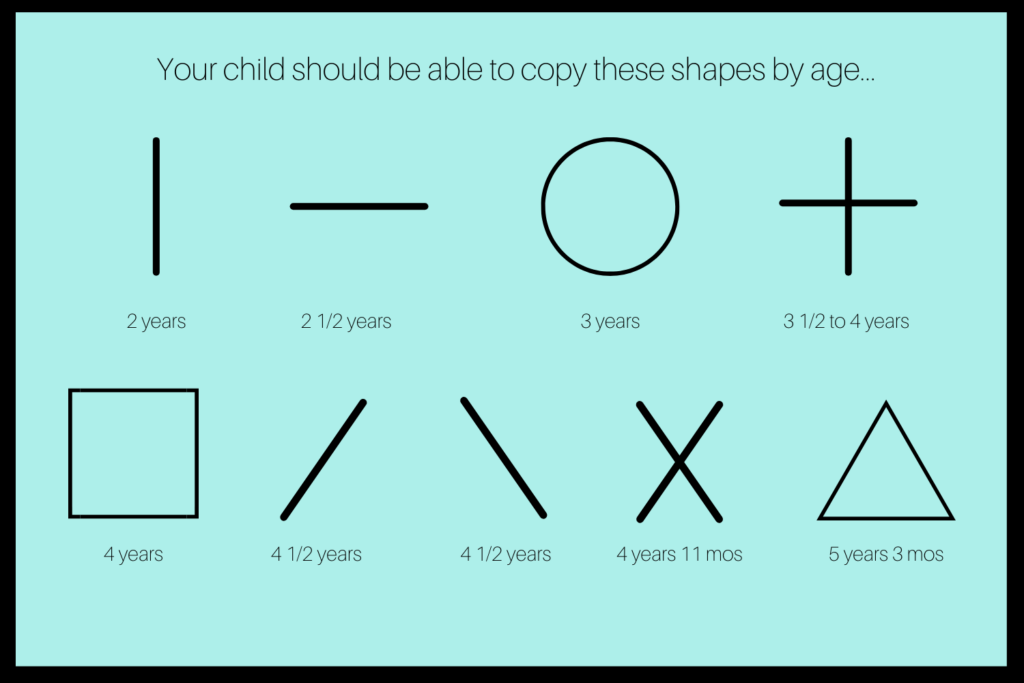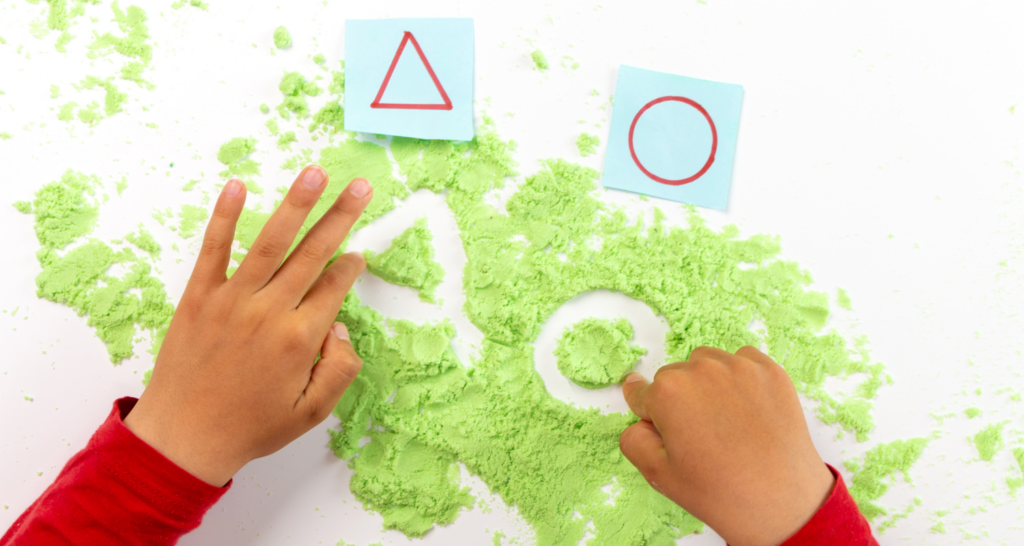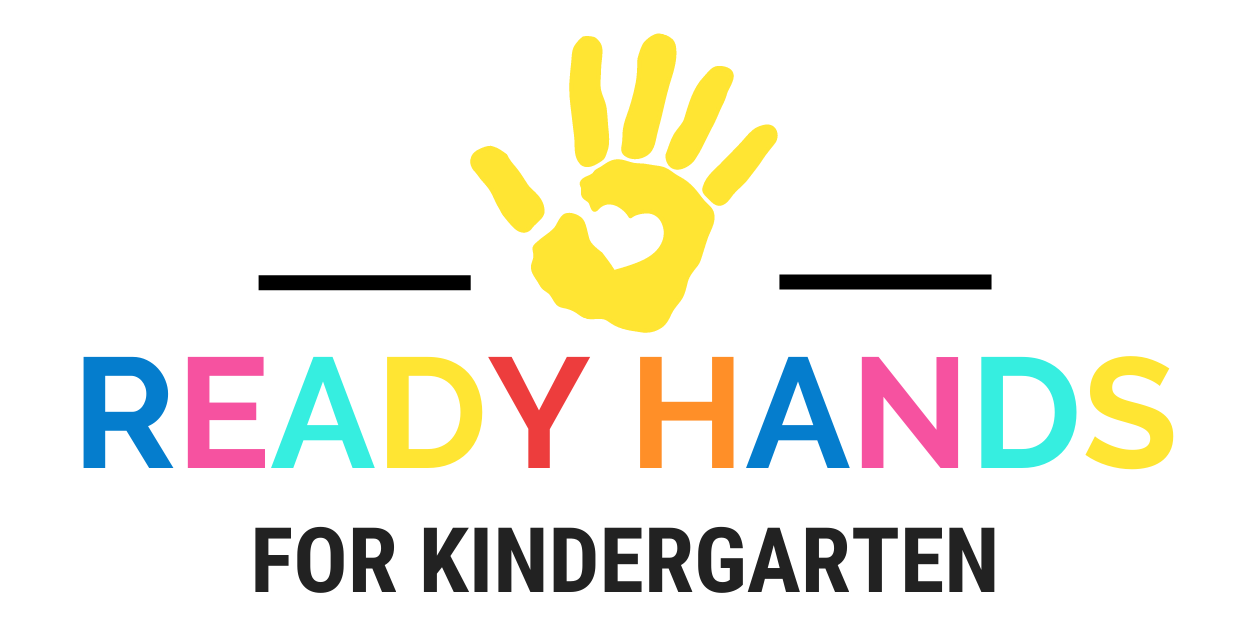Before you put a pencil in a child’s hand and ask them to start writing letters, it’s important to build a strong foundation. One of the ways to build that foundation is to teach prewriting shapes first. This is in addition to strengthening fine motor skills, visual motor skills, core strength and more so that your child is ready for the challenge of handwriting.
What are Prewriting Shapes?
So what are prewriting shapes anyway? Well, basically they are the building blocks of letters and numbers. This includes lines, circles, slanted lines, lines that intersect and overlap and more. There’s a natural progression to these prewriting shapes.

Around age 2 children are typically able to copy a vertical line. Then around age 2 1/2 they may be able to form a horizontal line. Next comes circles and a cross. At around 4 years of age a child can form a square. The next prewriting shapes are oblique lines around 4 1/2 years. At nearly 5 years of age we see children beginning to form an x and a few months later a triangle.
Keep in mind that all children move at their own pace. This is meant to be a guideline but is not written in stone. The important thing is forward progress, not necessarily exactly when each milestone is reached.
Above all, it’s important to make sure that any fine motor activity, like prewriting, is kept fun and entertaining. A frustrated child is one who doesn’t want to try new things, and that will limit progress. Meet your child where he/she is and move forward from there.
Fine Motor Skills Foundation First
Before I ever put a pencil in a child’s hand, I make sure that hand (and the rest of the body) is ready for it. Here are some simple fine motor play ideas that you can easily implement:
- Play with play dough
- Lace beads onto a pipe cleaner
- Stack blocks
- Climb and hang on the jungle gym
- Crawl or play wheelbarrow
- Tear and crumple paper
- Place coins in a piggy bank
- Play with lacing cards
- Clip clothespins to things
- Put washi tape or painters tape on and off the wall
And, of course, you can grab any of our amazing fine motor collections for loads of fine motor play activities!
Writing without Writing
If your child isn’t ready to hold a pencil properly, continue to work on those fine motor skills. But don’t think that means you shouldn’t practice “writing”.
First off, be sure your child is coloring and scribbling. And always break the crayons to encourage a mature grasp. This is a great activity in preparation for writing letters later on.
Start making prewriting shapes, but it doesn’t have to be on paper. Here are some writing without writing ideas:

- Scratch a shape using a q-tip or toothpick into play dough
- Draw in salt, sugar or sand
- Trace with finger
- Draw with a finger onto a squishy bag
- Go outside and draw with a stick in the dirt
- Get a little messy and draw in shaving cream or pudding
To get you started with practicing prewriting shapes with your kiddo, I put together a free resource that you’re going to love.

